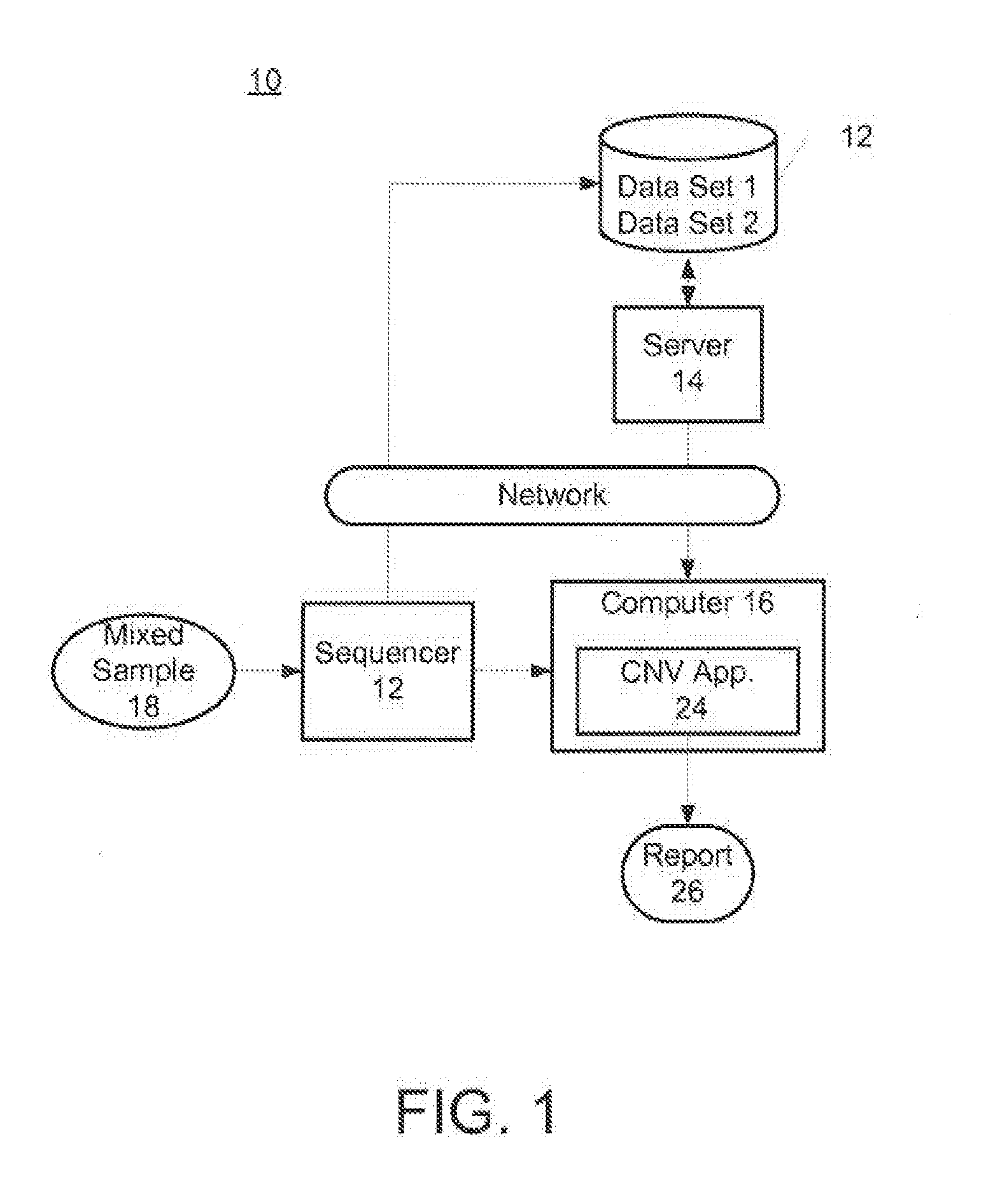Assay systems for determination of fetal copy number variation
a technology of copy number variation and assay system, which is applied in the direction of instruments, proteomics, material analysis, etc., can solve the problems of difficult analysis, difficulty in determining the risk of fetal loss, and inability to cost-effectively use non-selective techniques such as mpss,
- Summary
- Abstract
- Description
- Claims
- Application Information
AI Technical Summary
Problems solved by technology
Method used
Image
Examples
example 1
Subjects
[0122]Subjects are enrolled upon providing informed consent under protocols approved by institutional review boards. Subjects are required to be at least 18 years of age, at least 10 weeks gestational age, and to have singleton pregnancies. A subset of enrolled subjects, consisting of 250 women with disomic pregnancies, 72 women with trisomy 21 (T21) pregnancies, and 16 women with trisomy 18 (T18) pregnancies, are selected for inclusion in the study. The subjects are randomized into a cohort consisting of 130 disomic pregnancies, 30 T21 pregnancies, and 9 T18 pregnancies. The trisomy status of each pregnancy is confirmed by invasive testing (fluorescent in-situ hybridization and / or karyotype analysis) following the analysis provided using the assay of the invention, as described below.
example 2
Assessment of Fetal Chromosome Dosage of Two Individual Fetal Chromosomes in a Maternal Sample
[0123]To assess fetal nucleic acid dosage of genomic regions of interest in the maternal samples, assays are designed against a set of 150 SNP-containing loci on each of chromosomes 21 and 18. Each assay consists of three locus specific oligonucleotides: a left oligo with a 5′ universal amplification tail, a 5′ phosphorylated middle oligo, and a 5′ phosphorylated right oligo with a 3′ universal amplification tail. Two middle oligos differing by one base are used to query each SNP in the selected loci. SNPs are optimized for minor allele frequency in the HapMap 3 dataset. Duan, et al., Bioinformation, 3(3):139-41 (2008); Epub 2008 Nov. 9.
[0124]Oligonucleotides are synthesized by IDT (Coralville, Iowa) and pooled together to create a single multiplexed assay pool. PCR products are generated from each subject sample as described in U.S. Ser. No. 13 / 013,732, filed Jan. 25, 2011; and U.S. Ser. N...
example 3
Aneuploidy Detection Using Comparison of Dosages of Fetal Chromosome 18 and Fetal Chromosome 21
[0126]The initial risk of trisomy for chromosome 18 or 21 is further optimized using an odds ratio that compares a model assuming a disomic fetal chromosome and a model assuming a trisomic fetal chromosome. The distribution of differences in observed and reference dosages are evaluated using normal distributions with a mean of 0 and standard deviation estimated using Monte Carlo simulations that randomly draw from observed data. For the disomic model, p0 is used as the expected reference dosage in the simulations. For the trisomic model, p0 is adjusted on a per sample basis with the fetal dosage adjusted reference dosage {circumflex over (p)}j, defined as
p^j=(1+0.5fj)p0((1+0.5fj)p0)+(1-p0)
where fj was the fetal dosage for sample j. This adjustment accounts for the expected increased representation of a test chromosome when the fetus is trisomic. In the simulations both p0 and fj are random...
PUM
 Login to View More
Login to View More Abstract
Description
Claims
Application Information
 Login to View More
Login to View More - R&D
- Intellectual Property
- Life Sciences
- Materials
- Tech Scout
- Unparalleled Data Quality
- Higher Quality Content
- 60% Fewer Hallucinations
Browse by: Latest US Patents, China's latest patents, Technical Efficacy Thesaurus, Application Domain, Technology Topic, Popular Technical Reports.
© 2025 PatSnap. All rights reserved.Legal|Privacy policy|Modern Slavery Act Transparency Statement|Sitemap|About US| Contact US: help@patsnap.com



